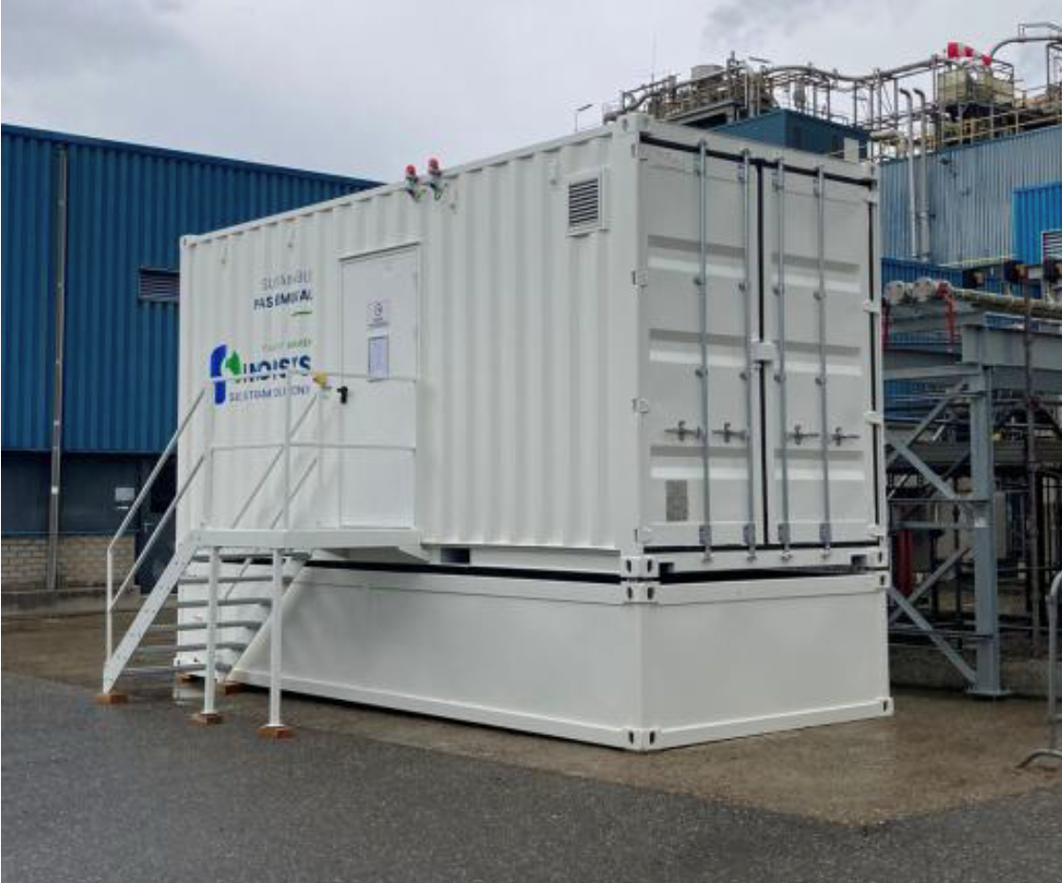
Targeted PFBS removal from concentrated wastewater
At a plastics compounding plant, a concentrated wastewater stream containing high levels of PFAS (primarily PFBS) and organic compounds at low pH posed a major treatment challenge. Due to the toxicity and regulatory pressure, the client needed an effective, on-site solution to avoid costly off-site incineration.
Inopsys collaborated with the client to treat this stream upstream of the existing WWTP, targeting a relatively low flow but highly concentrated stream. Lab testing confirmed that ion exchange resins outperformed GAC, especially given the high organic load. Based on these results, a custom-built installation using pre-filtration and resin-based adsorption was deployed.
Since its start in September 2024, the solution has reliably achieved PFAS removal from ppm levels down to or below permit limits, even at high initial concentrations. The unit combines cost-efficiency and a compact footprint, eliminating the need for incineration and offering a sustainable, long-term treatment strategy.
PFAS treatment at the source
This project is a standout example of treatment at the source rather than end-of-pipe, targeting PFAS early in the process. It achieved selective removal of PFBS in a challenging, high-organic matrix using a PFAS-specific resin. The solution moved rapidly from lab-scale proof of concept to full-scale implementation, with no pilot phase required, ensuring the client met permit deadlines on time. Housed in a containerized, mobile unit, this custom-built installation not only delivered performance but also earned the client’s global Environmental Award, recognizing its innovation and impact.
Our solution is compared to standard GAC
![]() HIGHER IN ADSORPTION CAPACITY
HIGHER IN ADSORPTION CAPACITY
![]() BETTER TO REMOVE OF LONG AND SHORT CHAIN PFAS
BETTER TO REMOVE OF LONG AND SHORT CHAIN PFAS
![]()
MORE COMPACT INSTALLATION, WITH LIMITED FOOTPRINT
![]() MORE SUSTAINABLE, DUE TO REGENERATION OF ADSORBENT
MORE SUSTAINABLE, DUE TO REGENERATION OF ADSORBENT
![]() HAS A LOW TOTAL LIFE CYCLE COST
HAS A LOW TOTAL LIFE CYCLE COST
![]() COMBINES OTHER TECHNOLOGIES TO BE ABLE TO RECUPERATE WATER
COMBINES OTHER TECHNOLOGIES TO BE ABLE TO RECUPERATE WATER
